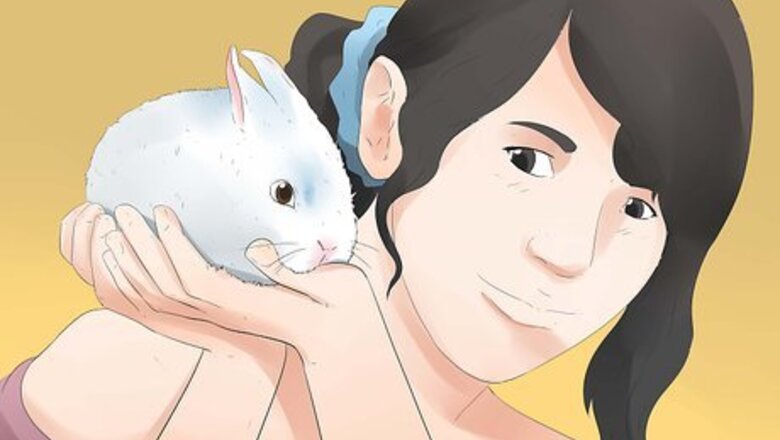
views
Understanding the Sounds Your Rabbit Makes
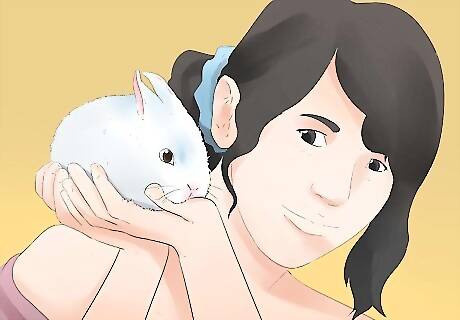
Listen to the sounds your rabbit makes. Realize that your rabbit will probably be silent most of the time. As a prey species, rabbits have learned to be quiet in order to escape the notice of predators. Some rabbits do make an occasional noise, either when very happy, scared, or as a warning. This makes them very different from purring cats and barking dogs which use a whole vocal range to communicate.
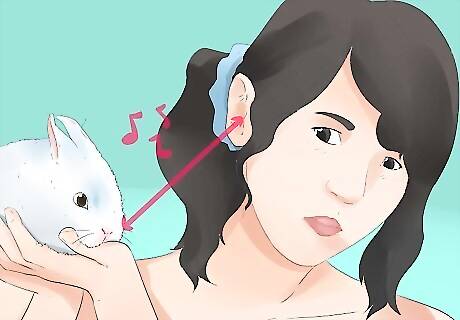
Keep an ear out for pleasure sounds. Rabbits have a limited repertoire of noises they make when they're happy. These include a very quiet purr, a soft clicking noise, and a very quiet grinding of the teeth noise, which means she is content. These can be very quiet, so you'll need to pay close attention in order to hear the sounds. Your rabbit may softly grind her teeth or click while you're petting her in her favorite spot, like behind the ears or under the chin. Be aware teeth grinding can be a sign of distress, but in this case the noise is louder.
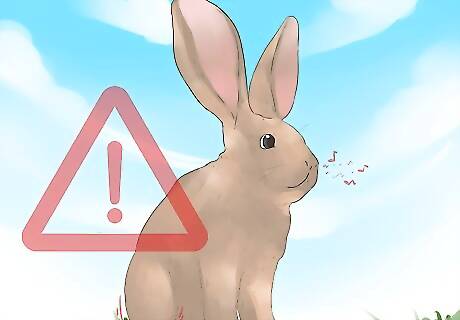
Listen for warning noises. The classic warning signal is a thump with a back leg to warn other members of the group of danger. A rabbit that feels threatened and is angry enough to attack may make a series of grunting or growling sounds. Likewise loud teeth-grinding is another warning sound of annoyance. Some rabbits, faced with a threat, will hiss. If you have two rabbits (one male and one female) and the male starts grunting, move him immediately, unless you are attempting to breed them. A grunting male is a sure sign that he is attempting to mate or breed with the female.
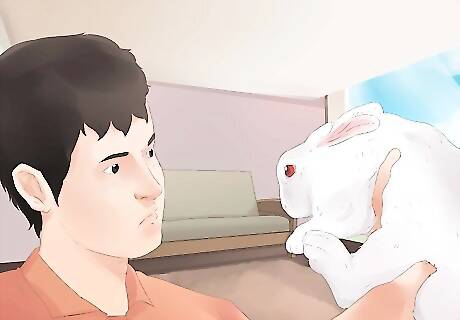
Respond quickly to sounds of fright. Rabbits have a particularly penetrating and distressing scream. They reserve this for when they are extremely frightened or actually being attacked. If your rabbit screams, she may be in danger or pain. If you notice your rabbit in pain, check for signs of obvious external injury and contact your rabbit's veterinarian immediately. Your rabbit may have a life threatening injury or internal issue that needs to be addressed right away. However, a rabbit's instinct as a prey species means when they are hurt they are most likely to hide or stay very still to avoid attracting attention, so do not rely on noise alone to alert you to discomfort.
Interpreting Your Rabbit's Body Language

Notice signs of relaxation. Much of a rabbit's body language is subtle and understated, but you may see him relax. A relaxed rabbit may lie on his belly with his back legs stretched out behind him. He may also squat with all legs tucked beneath him and his ears softly held against his head. A rabbit's ears are an early warning radar for danger, so ears in a neutral position indicate relaxation.
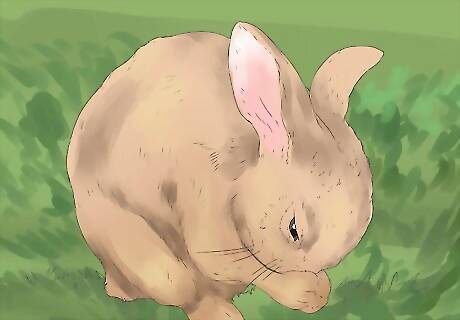
Recognize submissive gestures. Your rabbit might try to make himself as small as possible, pulling his head and neck into his body and generally trying to disappear. He'll also avoid making direct eye contact with the rabbit (or person) he is submitting to. A submissive rabbit is usually signalling to other rabbits in the warren that he is no threat.

Calm a frightened rabbit. If frightened, your rabbit will press his ears hard against his head (trying to reduce his silhouette so a predator doesn't spot him) and his facial muscles will appear taut and tense. This has the effect of making his eyes appear to pop out of his head. This is similar to a submissive rabbit, trying to make himself as small as possible.

Make adjustments as necessary if your rabbit shows signs of irritation or dislike. Your rabbit will rapidly shake his head from side to side. He will also thump a hind paw against the ground to make a drumming sound. If really irritated, he may even lunge at another rabbit or you.
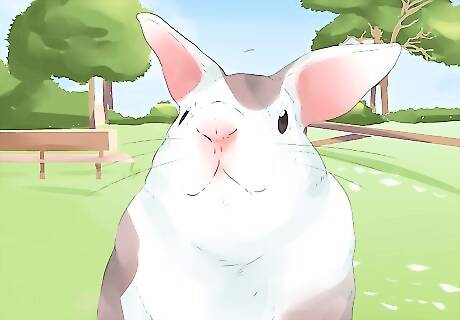
Learn to see signs of happiness or contentment. These are fun actions to look for. Your rabbit may perform binkies, or happy hops and twists in the air. Your rabbit may also run around your feet, showing that he's thoroughly enjoying life. He may also move his jaw as if chewing. All of these actions show that your rabbit is enjoying freedom of movement and is happy. If your rabbit isn't neutered, running around your feet may also indicate that your rabbit thinks you are an acceptable mate. Your rabbit might also lick your hands and face while he is being petted. This may be a sign that you are very special to him. He may even rub his chin on you, thereby marking you as its territory by leaving its scent.
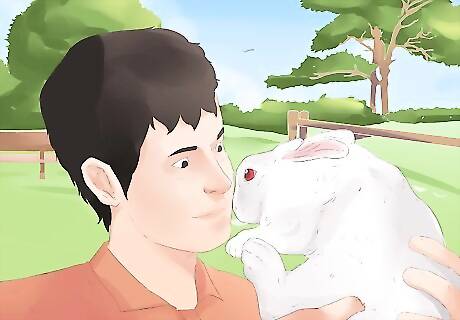
Respond to requests for attention. Your rabbit will give you plenty of clues that he needs your attention. These include: lightly nudging you with his nose, tugging on your clothes, climbing up your leg, hopping onto your lap, or nipping at your ankles. If your bunny nips at your ankles for attention, you can train him to stop by walking out of the room whenever he or she does this. Reward more polite behavior by petting him, talking to him, or giving him treats. Your rabbit might also make a noise that sounds like a goose honking. This signals that he's annoyed or wants attention. If your bunny is not neutered, he may make this sound when being amorous towards you or a soft toy. If your rabbit hops a few steps away, remains with its back to you, isn't occupied with anything else, and occasionally turns its head to see if you are still watching it, it is offended at something you've done. You can apologize by feeding him a treat, or giving a couple of pets on the head. You can also repeat this act to your rabbit if it does something to offend you. It will most likely come by to apologize, either with a few kisses or quick bumps.

Watch for bathroom signs. Your rabbit may eat his droppings. There is no need for you to be concerned if your bunny does this. It's natural and should not be discouraged. You may also see your rabbit pushing out his bottom and tail before urinating. Rabbits need to digest some foods twice and they take these droppings directly from their bottoms. This is to ensure that they get all the nutrients that they need from their food. Your rabbit might make a low pitched squeak when he does this.
Understanding Rabbit Behavior and Psychology
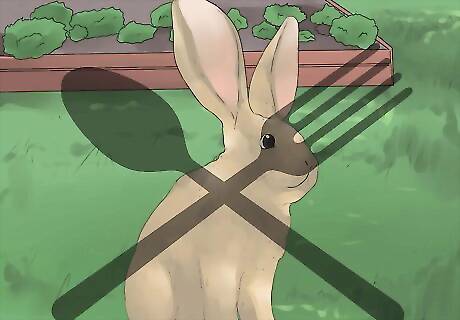
Realize that rabbits are a prey species. You can think of a rabbit as a 'listener' rather than a 'talker' because their lives are tuned to being on alert for danger. They use a highly developed sense of smell (hence the constant nose twitching), hearing (those wonderful long ears), and prominent eyes to watch for threats. This means it is even more important that you understand your rabbit, so you know what she does and doesn't like. This can minimize her stress.
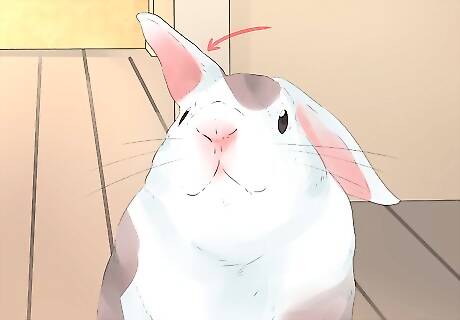
Read your rabbit's subtle signals. Nature intended rabbits to live underground in tunnels during the day, emerging at dusk and dawn (when it's more difficult for predator's eyes to spot them) to graze on grass and plants. Because they spend the majority of their time in the dark, rabbits make limited use of visual signals, such as nuanced facial expressions or body language.
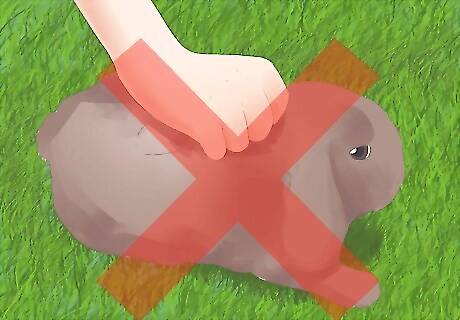
Avoid picking up your rabbit, unless she likes it. Being picked up by a human can be a terrifying experience to some pet rabbits who go into a catatonic state, where the rabbit lies absolutely still, eyes open and staring, and does a good impression of being dead. Rabbits are ground dwelling animals. In the wild, the only time they leave the ground is when they're picked up by a predator.

Respect if your rabbit doesn't want to be handled. If that's the case, she will either scrabble, wriggle, and fight so hard you get scratched, or she will go completely still. Far from indicating she appreciates being cuddled, a rabbit that keeps deathly still in your arms is actually pretending to be dead in order to make the predator (you!) give her up as a bad meal and put her back down. If your rabbit reacts in this way to being picked up, sit on the ground and encourage her to sit on your lap. This way her paws are in contact with a horizontal surface and she can learn to associate you with safety, rather than an instinctively alien and scary experience. If it's essential to pick the rabbit up, place a towel over her eyes, and use the rest of the towel to scoop her up. The darkness will help calm her.
Dealing with an Aggressive Rabbit

Avoid handling a rabbit that's biting or scratching. An aggressive rabbit has learnt to bite and scratch in order to avoid being picked up. Be aware that your rabbit is doing this out of fear and unease around humans. Gradually gain your rabbit's trust. Don't try forcing your rabbit to cuddle or sit in your lap.

Provide plenty of hiding places for your rabbit. Hiding can decrease his stress levels, so he may feel comforted knowing that he has lots of places to hide. This will also make your rabbit feel more secure.
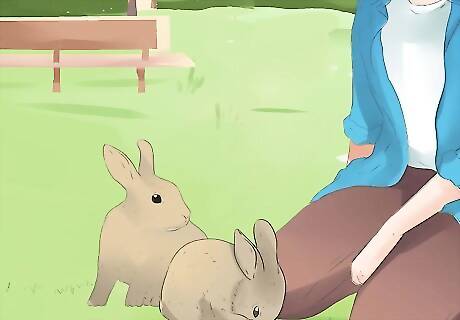
Start keeping your rabbit company. At first, do not attempt to handle him, but offer treats (you can even feed him dandelions!) so that he associates tasty foods with human company. Sit down beside the hutch every day, talking in a soothing voice and giving treats, so he learns humans are no threat. You can offer several kinds of fruits to your rabbit, such as grapes, apples, blueberries, and raspberries. Be sure to only give a very small amount, like a single grape or a couple of raspberries.
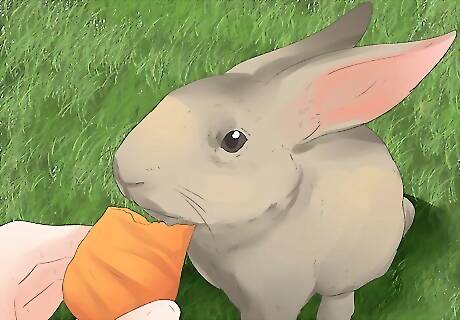
Begin interacting gradually. As your rabbit starts to venture out of his hiding place for treats, try to touch him briefly while he eats a treat. As the days and weeks go by, increase the amount of time you touch him until he's comfortable. Then you can try to entice him onto your lap (seated on the ground of course). This is also a great way of gaining a timid, frightened rabbit's trust.




















Comments
0 comment